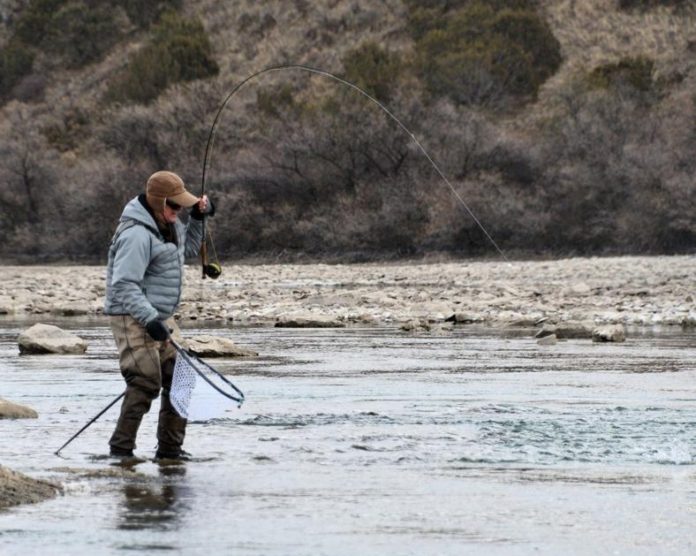In southeastern Idaho, fly fishing is ordinarily thought of as an activity that comes into its own after spring runoff or perhaps after ice-out for anglers that enjoy fishing still water. In part, this outlook resulted from the Idaho Department of Fish and Game maintaining opening and closing dates for most local rivers and creeks.
The opening weekend used to coincide with Memorial Day weekend and fishing would close Nov. 30. Years ago, IDFG decided to increase angler opportunity by keeping most lakes, rivers, and streams open all year. Certainly, there are exceptions and some waters are catch-and-release only, but local winter anglers are now mostly limited by access and ice.
IDFG regulations now indicate all waters are open all year and then identify exceptions to this general regulation. So, it’s a good idea to review the regs before hitting the water. For example, the Blackfoot River is open year-round below Government Dam (admittedly it is functionally closed much of the winter because of river icing and very difficult access) but upstream from Blackfoot Reservoir, the river is closed to fishing from Dec. 1 through June 30. Regardless, many local rivers and creeks have enough open water to allow anglers fly fishing opportunities throughout much of the winter.
Nearby waters offering winter fly fishing include the Snake River, Birch Creek, South Fork, many parts of the Henry’s Fork, and Portneuf River. Again, check the regulations for details on local closures and equipment restrictions. As an example, on the Snake River from Eagle Rock upstream to American Falls Dam, regulations stipulate catch and release only for all game fish, bait is not allowed, and anglers must use barbless hooks from Oct. 16 through the Friday before Memorial Day weekend. I recently talked with an angler on this section of the river that was aware of all of these restrictions except the barbless hook requirement.
The river may be open and there’s a flyrod in your hand but remember, it’s Idaho, it’s winter, and it’s cold. Being Idaho, winter weather can change from acceptable to downright miserable in a matter of minutes. So, go prepared. Make sure you dress in layers of clothing, avoid cotton, and use good quality waders. Sunglasses, a warm hat (I like a wool hat with brim and ear flaps) and fingerless gloves will help keep anglers comfortable. Hand warmers also help. A small PFD is not a bad idea and keep some extra clothes in your vehicle just in case.
Fishing equipment depends on water and conditions. I prefer a 5 or 6 weight 9-foot rod with floating or sink tip line, depending on the situation and water fished. A friend has just about convinced me that a 10-foot rod has advantages in working big water and handling nymphs. I may have to buy one. A variety of fly patterns can be effective including streamers and scuds, often fished under a strike indicator on larger rivers. Beadheads and small streamers work well for smaller spring creeks.
Many winter areas are well-known and popular with anglers. Some areas may also be used by waterfowl hunters. Be courteous and don’t crowd others. If you arrive at your destination at the same time as other anglers talk to them and see if you can work out a plan to avoid ending up on the same part of the river.
Fishing big water in winter can be inherently dangerous. It’s best to fish with a partner but if you go alone make sure someone knows where you are going and when you plan to return.
It may be winter but that’s no excuse to hang up the flyrod. Go outside and have fun.
Jack Connelly has lived in Bingham County for the last 43 years. He is an avid outdoorsman and has hiked, camped, hunted, and fished over much of the U.S. as well as parts of Europe and Asia. Connelly worked as a biologist for the Idaho Department of Fish and Game for over 30 years. He now enjoys retirement with his wife Cheryl raising chickens and bird dogs at their home in Blackfoot.
Credit: Source link































